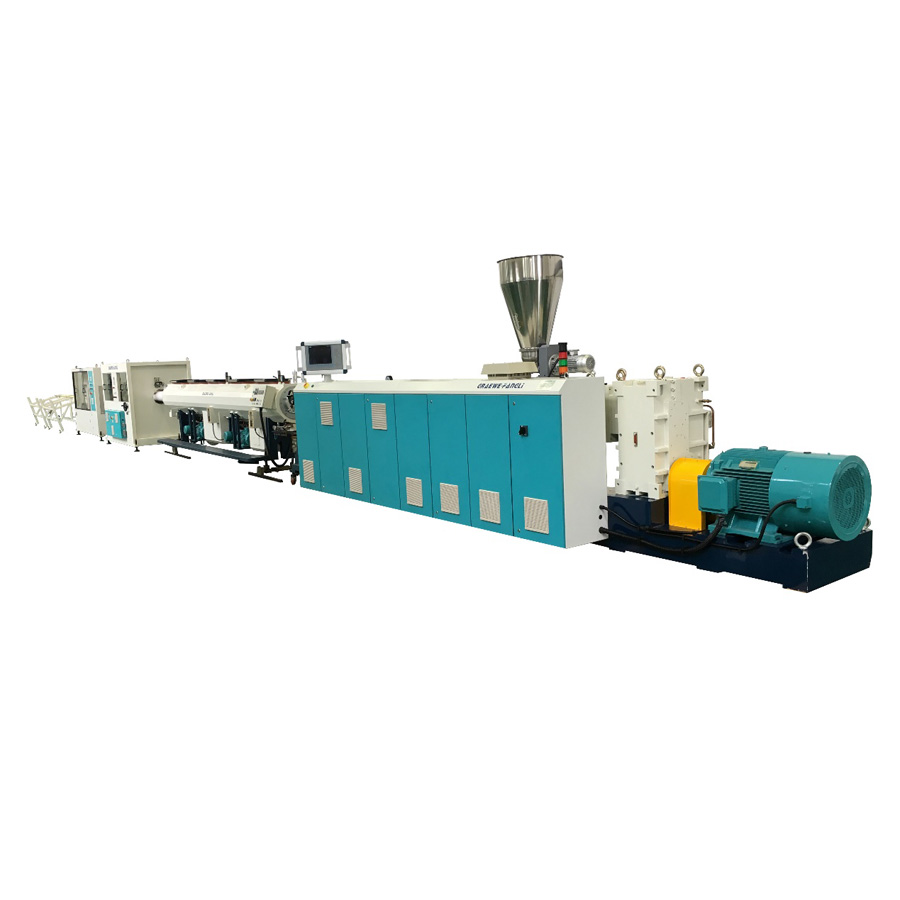Unveiling the Extrusion Line of UPVC/PVC-UH Pipes: Engineering Precision and Durability
2023-10-18
Introduction:
In the realm of modern construction, UPVC/PVC-UH pipes have become a cornerstone of various applications, ranging from water supply and drainage systems to industrial piping. Renowned for their exceptional strength, chemical resistance, and cost-effectiveness, these pipes are manufactured through a meticulous extrusion process. In this blog post, we will explore the intricacies of the extrusion line used to create UPVC/PVC-UH pipes, shedding light on the stages involved and the machinery employed.
1. Raw Material Preparation:
The journey of UPVC/PVC-UH pipe manufacturing begins with the careful selection and preparation of raw materials. These pipes are typically composed of polyvinyl chloride (PVC) resin, along with stabilizers, modifiers, pigments, and additives. The raw materials are carefully measured and mixed in precise proportions to attain the desired characteristics, including strength, flexibility, and resistance to environmental factors. This critical step sets the foundation for the quality of the final product.
2. Extrusion Machinery:
The extrusion line is the backbone of UPVC/PVC-UH pipe production, incorporating several essential components:
a. Extruder: The extruder serves as the core of the extrusion line. It consists of a hopper that holds the PVC compound, a screw mechanism that conveys and melts the material, and a heated barrel that maintains the optimal temperature for the melting process. As the PVC compound is heated and melted within the extruder, it transforms into a molten mass, preparing it for the shaping process.
b. Extrusion Die: Once the PVC compound has melted, it is passed through an extrusion die, which imparts the desired shape and dimensions to the molten material. The extrusion die acts as a precision tool, determining the final profile of the pipe. It ensures consistent quality, dimensional accuracy, and uniformity in the manufactured pipes.
c. Vacuum Sizing Tank: After exiting the extrusion die, the newly formed pipe is guided through a vacuum sizing tank. This tank cools the pipe and solidifies its structure while maintaining its precise dimensions. The vacuum technology within the tank ensures uniform cooling, minimizing the risk of deformation and ensuring the pipe's overall integrity.
d. Traction Equipment: To regulate the speed and control the movement of the extruded pipe, traction equipment is utilized. Caterpillar pullers or belt pullers are commonly employed in the extrusion line. These traction devices gently grip the pipe and facilitate its continuous movement through the production line. The controlled traction ensures consistent wall thickness and dimensional accuracy throughout the pipe's length.
e. Cutting and Stacking Equipment: Once the extrusion process is complete, the pipe undergoes cutting and stacking procedures. Automated cutting machines are used to achieve precise and clean cuts, resulting in pipes of the desired lengths. The cut pipes are then stacked or coiled, ready for subsequent processing or packaging.
3. Quality Control and Testing:
Quality control is paramount in UPVC/PVC-UH pipe manufacturing. Throughout the extrusion process, rigorous inspections and tests are conducted to ensure that the pipes meet the required standards. Dimensional measurements, visual inspections, and mechanical property tests are performed to assess the pipes' strength, impact resistance, and chemical compatibility. Pressure testing is often carried out to verify the pipes' structural integrity and their ability to withstand specified operating pressures. These stringent quality control measures ensure that the manufactured pipes are durable, reliable, and capable of meeting industry requirements.



